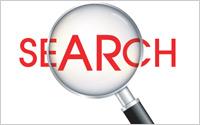 Pull up the Interactive Advertising Bureau's (IAB) The Native Advertising Playbook released Wednesday and search on the keyword "search." You will find about 20 references. The playbook
highlights six core interactive ad formats being used as native. No. 2 on the list is paid-search ad units. At the MediaPost Search Insider Summit next week, a panel of experts led by Edmunds.com's
Blessin Lam will explain how it's done.
Pull up the Interactive Advertising Bureau's (IAB) The Native Advertising Playbook released Wednesday and search on the keyword "search." You will find about 20 references. The playbook
highlights six core interactive ad formats being used as native. No. 2 on the list is paid-search ad units. At the MediaPost Search Insider Summit next week, a panel of experts led by Edmunds.com's
Blessin Lam will explain how it's done.
The paid-search ad found above the organic search results that looks like the surrounding search results would fit into the IAB framework category for
native ad units as long as it had a disclosure that it is an ad unit. It must link to a page like the organic results, have been sold with a guaranteed placement so the agency has precise knowledge of
the surrounding context, and be measured on conversion metrics such as a purchase.
advertisement
advertisement
The IAB dedicates an entire page in its native ad playbook to provide details on how to display the ad and
the type of success, or failure, as well as the measurement to use. It points to guidelines from the Federal Trade Commission on how to avoid the potential for deceptive ad practices. These guidelines
require that consumers should have the ability to easily distinguish a natural search result from the advertising surrounded by the ad the search engine returns.
The FTC guidance requires ads
to use language that "explicitly and unambiguously conveys" when a search result is advertising, to make it large and visible to ensure that consumers will notice, and to locate it near search results
where consumers will see it.
On Wednesday, the FTC held a workshop called Blurred Lines: Advertising or Content? A live streaming video ran here. The FTC, which focuses on the native ad format, wants marketers to consider not just what the promotion says, but the
implications of what the ad conveys to consumers.
"Magnifying Glass" photo from
Shutterstock.